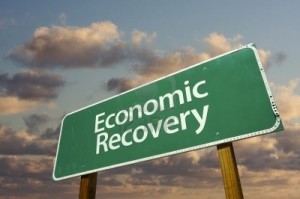(ThyBlackMan.com) The national unemployment rate for October “dropped to 5.8 percent” and the media is heralding this as great news. However, it is not great news for every worker group in the labor force. The recovery from the 2008 downturn has been spotty and benefited different working groups in different ways. Positive benefits to African Americans have been far less than expected. Blacks have fared worst than any of the tracked worker groups and October was no different. They fared worst than Asians, Hispanics and obviously worst than whites who had a national unemployment rate of 4.8 percent in October, which is very close to full employment statistically.
The national unemployment rate for African Americans for the same period was 10.9 percent. While these numbers are informative, those who track the unemployment numbers agree that they do not reflect accurately the real rate of unemployment and could be off by as much as 2 to 7 percent. Blacks as a race have yet to see their unemployment numbers fall into single digits since the start of the economic downturn back in 2008.
Statistics of these types add nothing new to the conversation when it comes to describing the economically poor state of Black America. The black community has now endured almost seven years of double-digit unemployment. However, the prediction that these numbers are going to get worst before they get better “is new and a revelation to many of you.” I am predicting confidently that the African American unemployment rate will turn upward again, along with the national unemployment rate and that this recovery will fail. It is going to be a tough haul for blacks especially in locales where the unemployment rate for African Americans is already high like Ferguson, Missouri where the black male unemployment rate averages 27 percent. Here are the three reasons why this recovery will fail.
will turn upward again, along with the national unemployment rate and that this recovery will fail. It is going to be a tough haul for blacks especially in locales where the unemployment rate for African Americans is already high like Ferguson, Missouri where the black male unemployment rate averages 27 percent. Here are the three reasons why this recovery will fail.
1) Housing – six years after the 2008 downturn, new housing construction has not bounced back. The housing industry is building fewer houses than expected given the increase in population. This industry accounts for a significant number of jobs; skilled and unskilled. Housing as an industry usually leads in economic upturns. Fixing the housing market requires the federal government to find a way to put more people back to work at jobs that pay more than minimal wages, so they can come up with the down payment needed to purchase a house and make the monthly mortgage payments.
2) Business Investment – corporate investment has lagged when it comes to investing in new equipment and factories. It is an indication of the lack of confidence in this recovery. Corporations have used this historical period of low interest rates to refinance debt and buy back stocks, raising the price per share of their stocks.
3) Government Spending – when looking at spending on the federal and state levels, the economy is missing over a quarter billion dollars in annual spending. State governments in the recent past actually cut back. Moreover, the federal government has winded down spending as it attempts to end two wars, in Iraq and Afghanistan.
Additionally, before the national unemployment rate decreases on a long-term basis, there will have to be a better alignment of wealth distribution. The economy is unbalanced and not working properly when it comes to the amount of wealth being held by the top 10 percent. Too much wealth has been pushed upward through low interest rates, which provide fuel to a rising stock market while depriving savers and those who depend on interest income a safe haven for their capital. Also, contributing to and driving this upshot of wealth to the top was the mismanagement of the Social Security trust fund, hefty tax cuts for the wealthy during Republican administrations, schemes like the saving and loan scandal under President Reagan which cost taxpayers $100 billion dollars and the sub-prime housing debacle.
The federal government in responding to the 2008 Great Recession rushed even more wealth to businesses (order “The Fix This Time,” @ http://www.thefixthistime.com for details) through bridge loans to provide cash flow, low interest rate business loans and grants. In more than one instance, the federal government nationalized some companies using taxpayers’ money to take huge stock positions, thus providing capital to those corporations to keep them afloat.
Wealthy stockholders benefited from the federal government’s takeover of these businesses, even though the federal government itself in some instances profited when it sold its holdings. With so much capital having been pushed upward, the federal government now has to find a way to push money downward into the hands of the consumer. The reason the consumer cannot be ignored is that the consumer makes up 70% of the gross domestic product or GDP. In other words, no sustained recovery can take place without the federal government putting in place a job creation plan that puts capital into the hands of the consumer, who represents 70% of the economic activity of our economy.
Following, is a good example of why. Take a single billionaire who has an estimated wealth of $10 billion dollars, which is not hyperbolic as Bill Gates, the richest man in America has wealth estimated at $40 billion dollars. Our billionaire can with his wealth only drive so many cars, purchase so much fuel, and have so much maintenance done on his vehicles even if he purchases a hundred vehicles at one time. Moreover, he can only live in one house at a time even if he owns several. He can eat just so many meals even if he eats out every day and night. Now, take that same $10 billion dollars, chop it up into $40,000.00 dollar increments and put that $40,000.00 in the hands of individual consumers; a different picture of consumption emerges which generates increased economic activity and creates jobs.
Ten billion dollars divided among consumers in $40,000.00 increments amounts to 250,000 consumers sharing that money. Now you get some idea of the kind of economic punch consumers can generate, because you are now talking about the purchase of 250,000 cars if each decided to buy one; 250,000 oil changes; and one million tires if all four tires are changed on those automobiles. Of course, the same impact is logically true when it comes to buying clothing, dining out, buying and renting living quarters.
There is no suggestion here, that the federal government accost millionaires and billionaires, take their money and hand it over to consumers to create jobs. Nevertheless, to get stronger job growth, the federal government has to find a way to put money directly into the hands of consumers in big enough amounts to generate the kind of economic activity suggested above. Otherwise, America will continue to experience a stagnant economy and mediocre job growth. If you add to that a liberal comprehensive immigration policy resulting in 10 to 11 million immigrants legally joining the labor force and competing for jobs with impunity, not only will America have an economy that is not creating enough jobs, but one where real wages will fall at the same time.
When you have too many job seekers competing for a limited amount of jobs, it is logical that high wages become a casualty. Right now, the economy is creating on average 207,000 jobs monthly when it needs to create 250,000 to 300,000 a month. Low wages and long working hours are a by product of a stagnant economy. Guess who benefits in such a situation?
The Davis Plan is at http://www.Jobcreationnow.com – there, you will also find a button for the petition!
Staff Writer; James Davis
You can get this brother’s latest books titled, “The Fix This Time” Expanding Social Security Benefits to Create Jobs and Spur Demand @ http://www.amazon.com/dp/B00MI3PD2M and
“Hey…God’s Talking To You” The Study Book @ http://www.amazon.com/dp/B00GYI3VQW.

















Leave a Reply